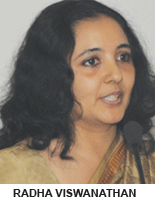 Achieving expansion, equity and excellence in higher and technical education through increased public spending, private initiatives and institutional and policy reform were objectives of the Eleventh Plan (2007-12). But now in the final year of the Plan, it’s clear none of these objectives have been meaningfully attained. Policy formu-lation has been piecemeal, lacking consensus and hobbled by inter-ministerial turf wars. The Central and state governments, notwithstanding their rhetoric, are unwilling to give effective autonomy to institutions of higher and technical education. Moreover in the country’s 25,951 colleges and 504 universities, higher education reforms have been stymied by teachers’ unions and weak institutional leadership. Academic standards continue to be compromised in the cause of equity and social justice.
Achieving expansion, equity and excellence in higher and technical education through increased public spending, private initiatives and institutional and policy reform were objectives of the Eleventh Plan (2007-12). But now in the final year of the Plan, it’s clear none of these objectives have been meaningfully attained. Policy formu-lation has been piecemeal, lacking consensus and hobbled by inter-ministerial turf wars. The Central and state governments, notwithstanding their rhetoric, are unwilling to give effective autonomy to institutions of higher and technical education. Moreover in the country’s 25,951 colleges and 504 universities, higher education reforms have been stymied by teachers’ unions and weak institutional leadership. Academic standards continue to be compromised in the cause of equity and social justice.
The major problem afflicting higher education in contemporary India is that not only is capacity expansion too slow and inadequate, it is also misdirected. The system is unable to deliver meaningful upward socio-economic mobility by way of sufficiently readying students for employment, self-employ-ment or entrepreneurship. The misdirected increase in the number of colleges offering sub-standard three-year bachelor’s programmes in arts, science and commerce (ASC), has ensured 80 percent of college graduates don’t have marketable skills. This forces nearly 10.2 million students to search for employment in the informal sector, where much of the work they do has no corre-lation to what they have studied. In the circumstances, the HRD ministry’s plan to promote 370 new ASC degree colleges in districts with low GER (gross enrolment ratio) is unimaginative and wasteful.
It’s plain as a pikestaff that there’s an acute shortage of quality institutions in tertiary education. This is reflected in the highly selective admission processes of top ranked collegiate institutions. For instance, 468,000 school-leavers wrote the recently concluded Joint Entrance Examination (JEE) 2011 vying for 9,618 seats in the IITs; 1 million students for 9,500 seats in NITs; and 200,000 students compete annually for a mere 77 undergraduate medical seats at Delhi’s showpiece All India Institute of Medical Sciences.
With the great majority of India’s graduates unemployable, it’s hardly surprising the National Skills Development Corporation (NSDC) estimates a shortfall of 244 million skilled personnel by 2022 in 21 key sectors of the economy including civil and automotive engineering, healthcare and green technologies. A severe shortage of quality collegiate and varsity education has also adversely impacted equity and inclusion in higher education. Since independence, governments at the Centre and in the states have followed policies of positive discrimination in higher education institutions. Admission criteria are relaxed to admit students from socio-economically deprived and backward communities.
Yet policy makers and political leaders who favour reservations seem unaware that poor students from scheduled caste, scheduled tribes and other backward communities tend to suffer most if curricular quality is sacrificed for expanding access. Typically, when access is liberalised, overcrowded classrooms, adverse teacher-pupil ratios, shortages of library resources etc, become endemic. Unfortunately while populist politicians are in favour of students from historically marginalised groups being able to access the best institutions of higher education, they seem to have no interest in equity of outcomes.
Against this backdrop, it’s imperative for the political class to acknowledge that real and effective autonomy for colleges and universities in academic, administrative and financial matters is the first precondition of achieving quality and equity. Overregulation of the Indian higher education system has damaged the diversity and vitality of the country’s 25,951 colleges, of whom a mere 246 have been awarded ‘College with Potential for Excellence’ status, only 10 percent have been identified for grant of autonomous status, and 1.2 percent conferred actual autonomy. A massive cohort of 8,800 colleges remains outside the support of UGC because they do not fulfill the minimum quality requirement.
The quality mess in India’s institutions of higher education — particularly in arts, science, and commerce education — has been compounded by reservations spilling over into faculty selection and promotion. Currently there seems to be little awareness in government that while diversity in faculty should be encouraged, it should not be at the cost of merit. Mediocre teachers, irrespective of caste or creed, undermine equity of outcomes because the biggest losers of bad teaching are students from deprived sections of society, whose foundational school education tends to be weak.
The challenge of capacity expansion in higher education while maintaining equity and excellence needs to be viewed as an ongoing national mission requiring continuous evaluation of the processes of access, rigorous safeguards against poor quality education, and assessing the contribution of higher education to social justice, cohesion and equitable economic development.
(Dr. Radha Viswanathan is a fellow, Observer Research Foundation, Mumbai, with inputs from Dr. Leena Wadia and Dr. Catarina Correia)